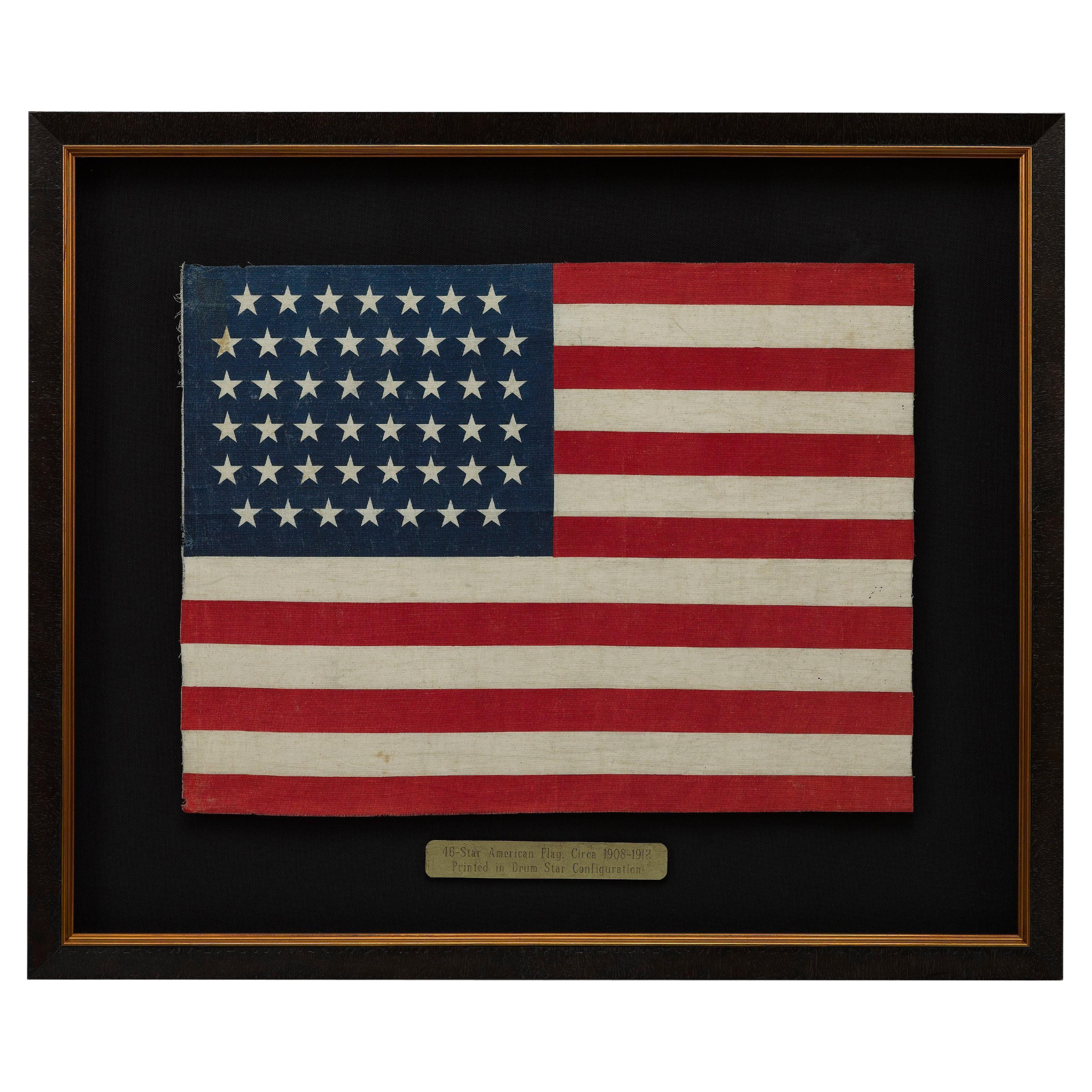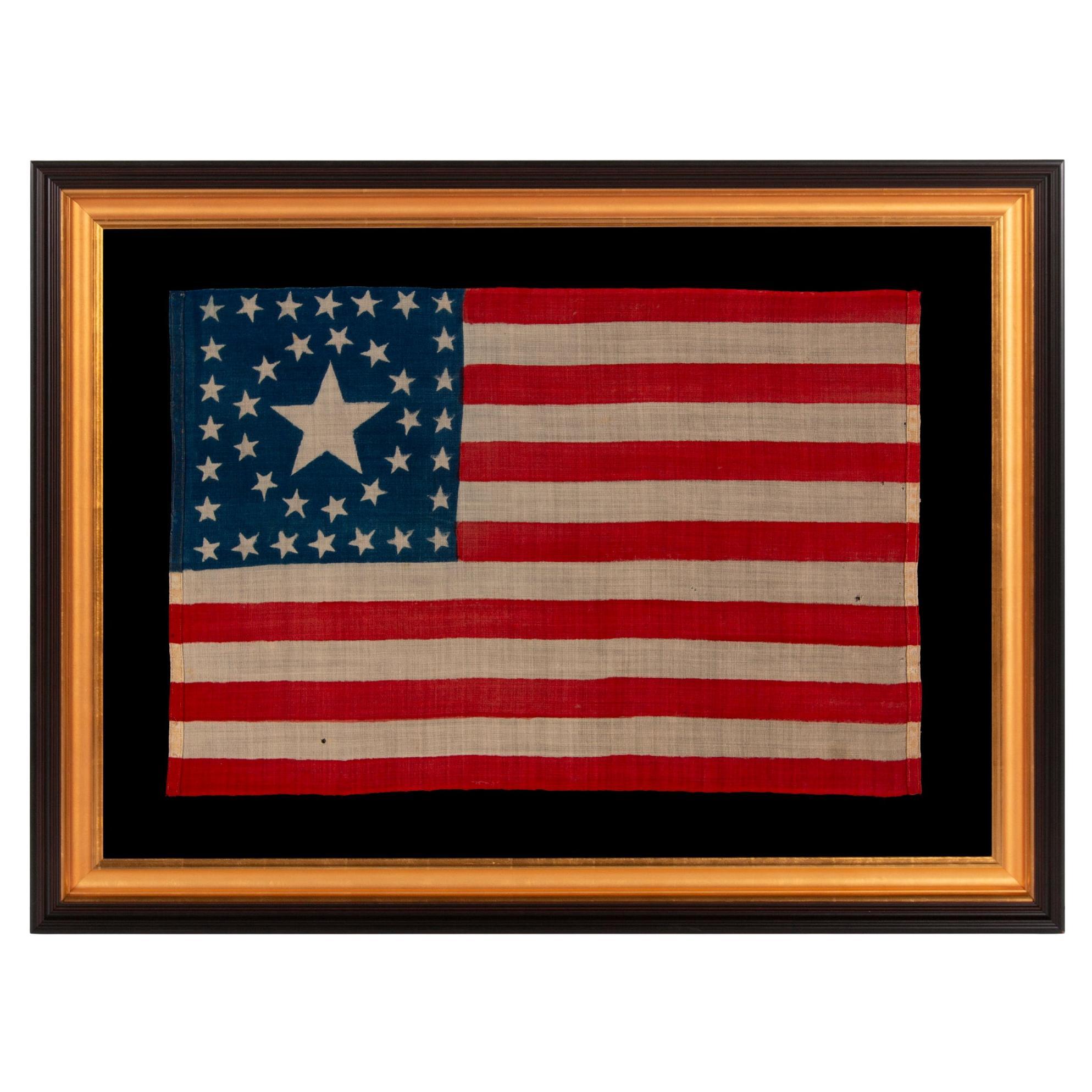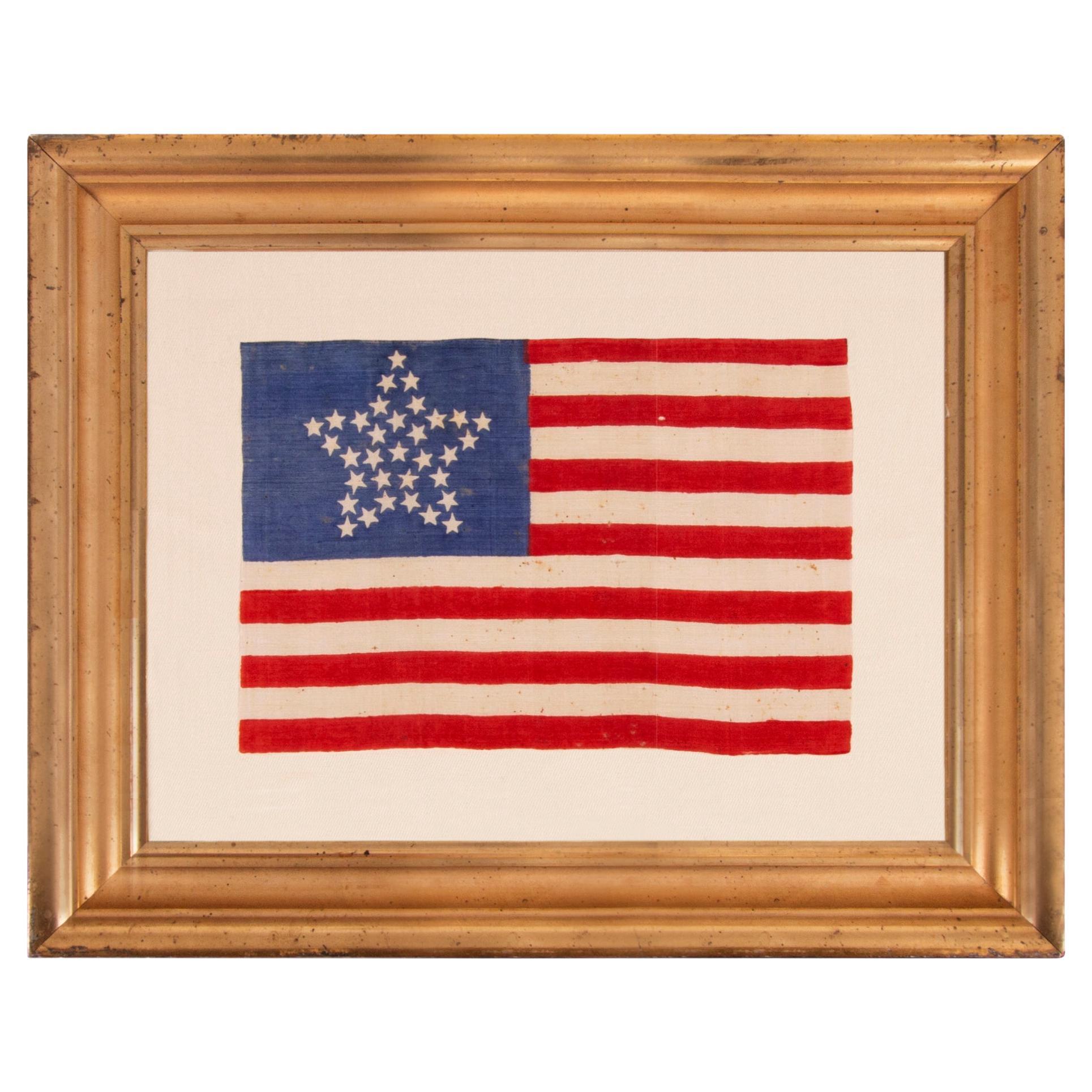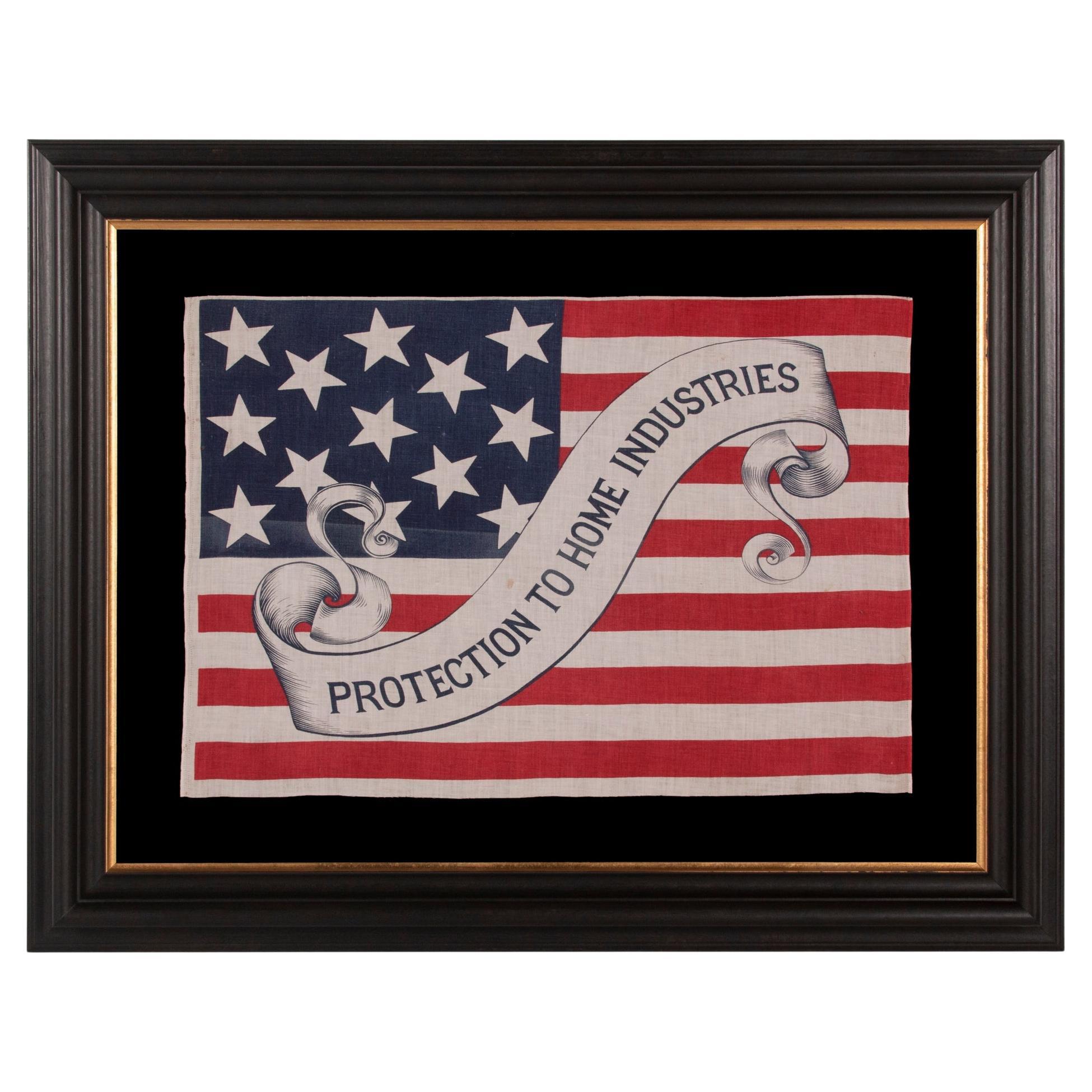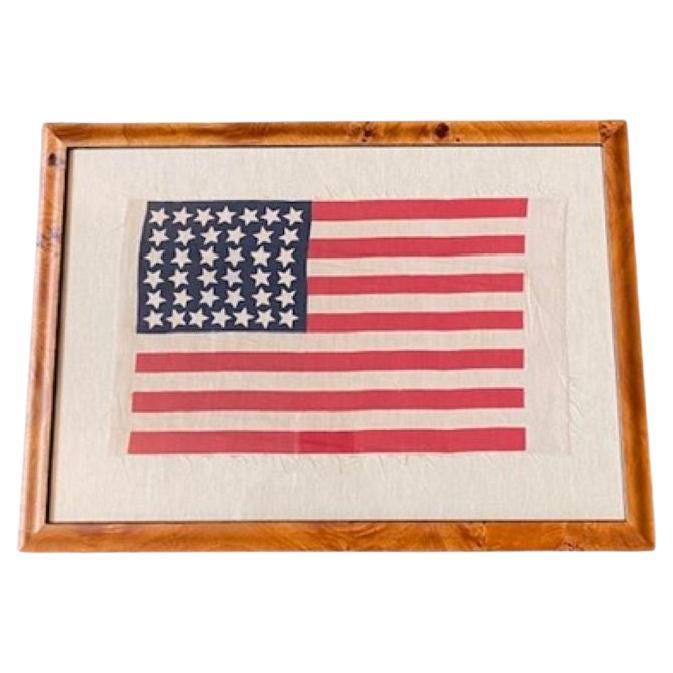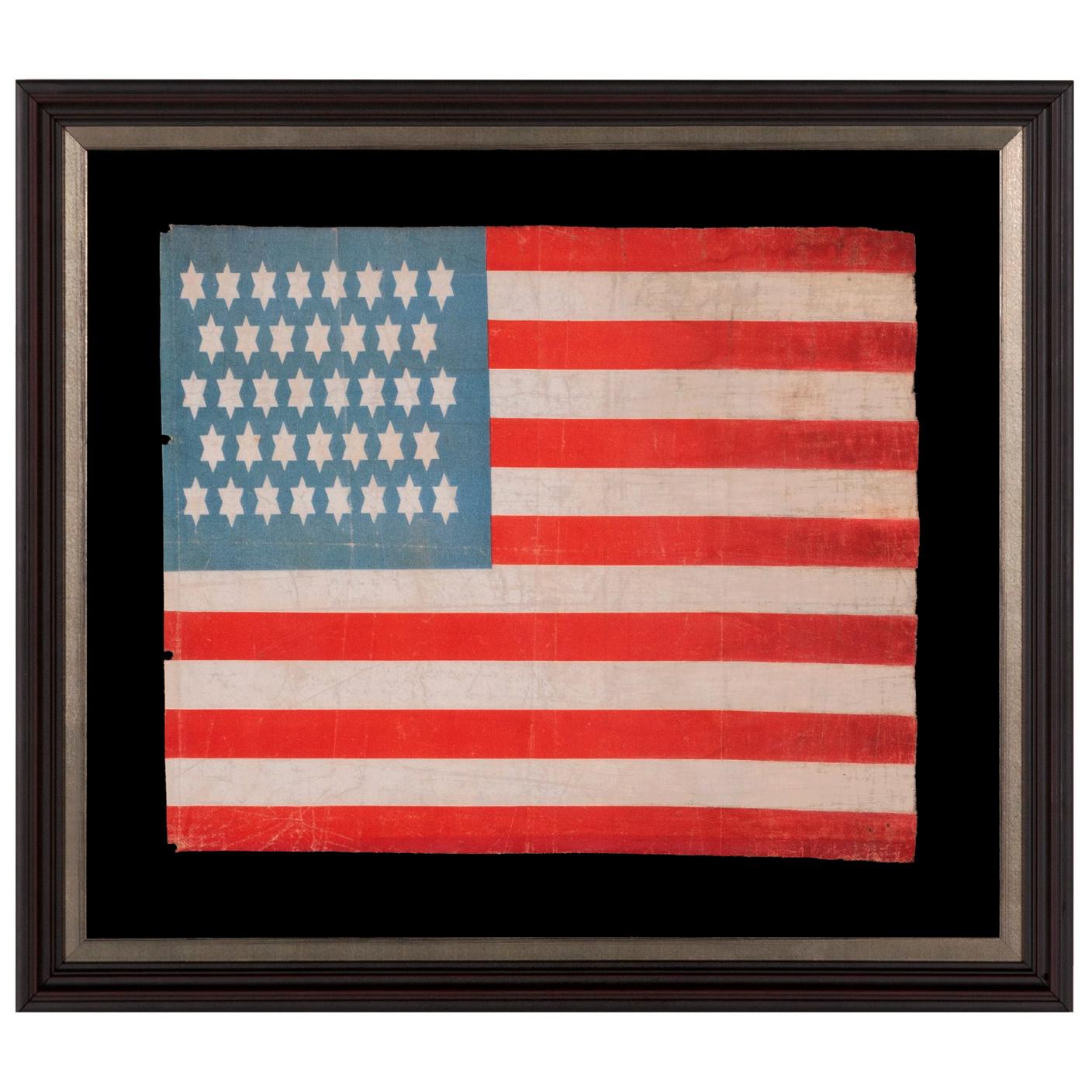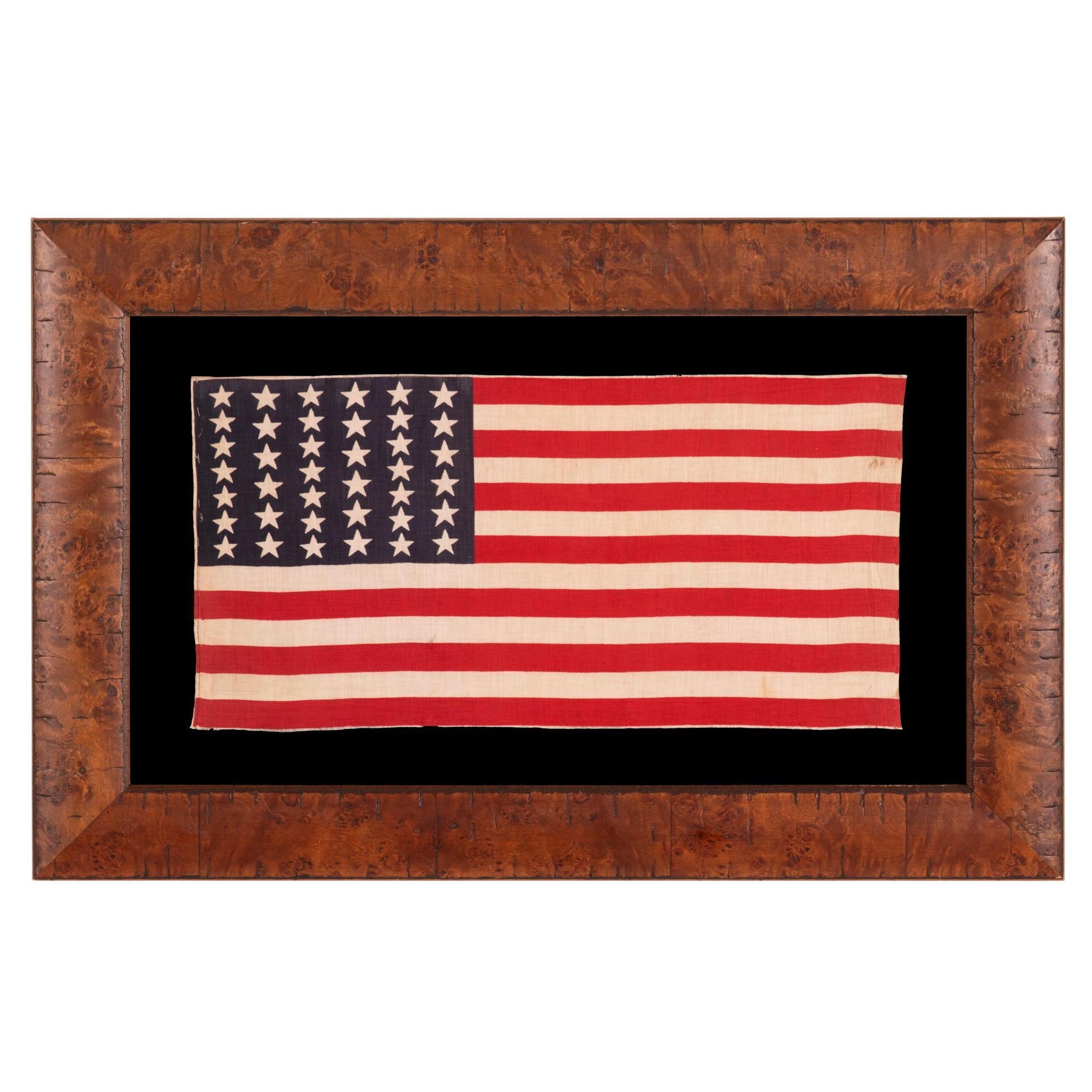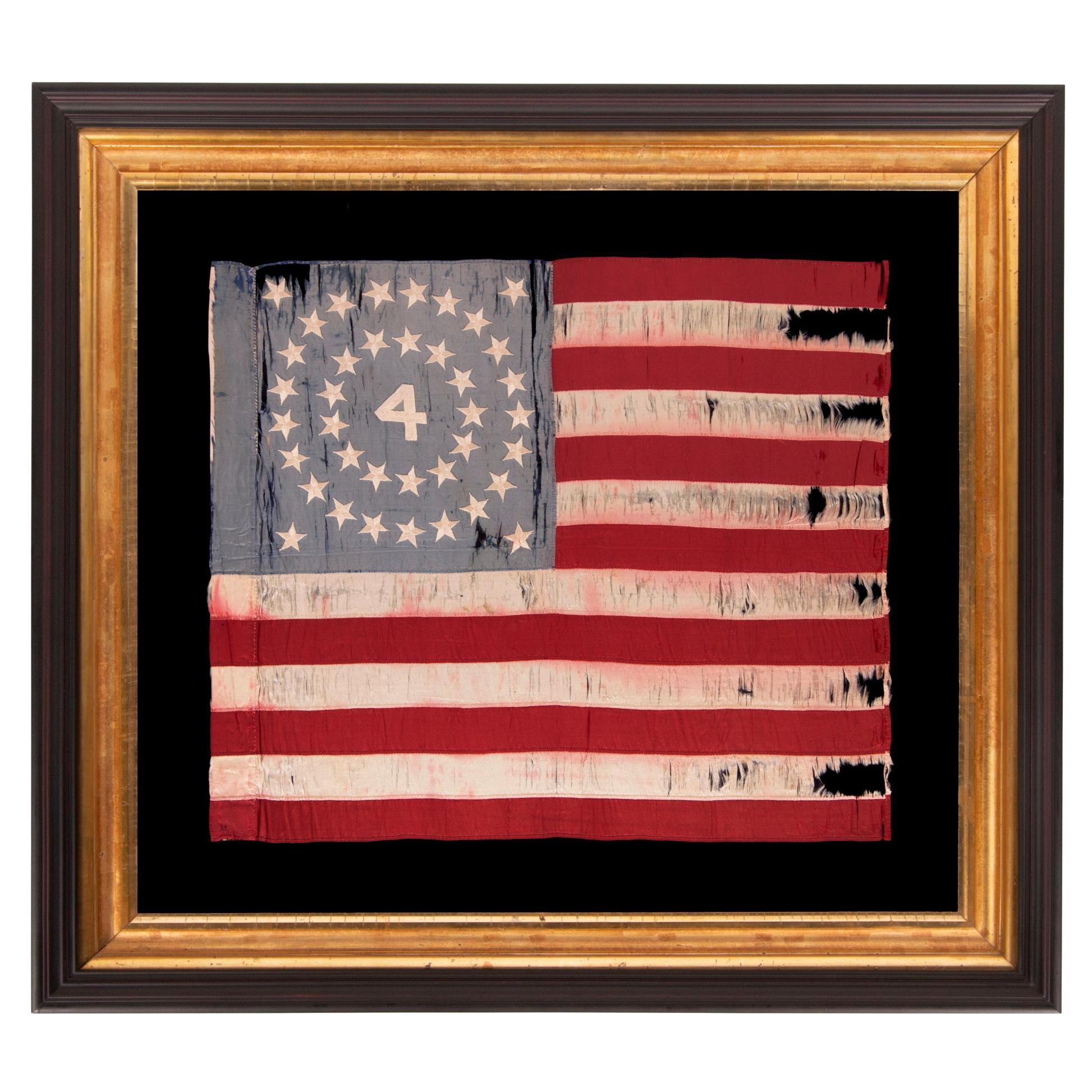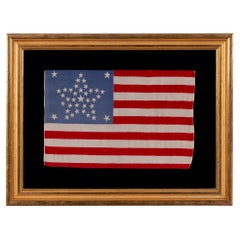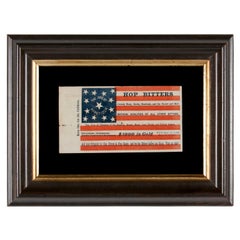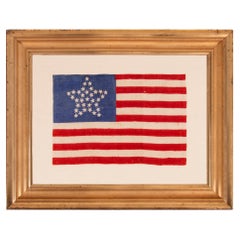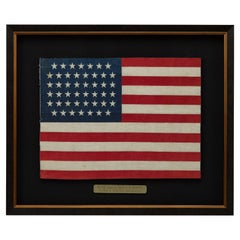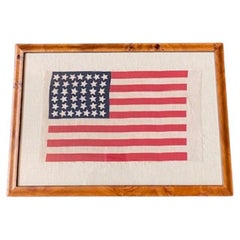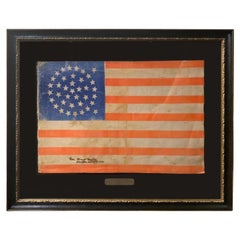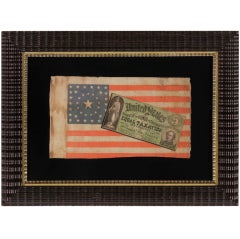
Extremely Rare Parade Flag With Rare Circle-in-a-square Star Configuration
View Similar Items
Want more images or videos?
Request additional images or videos from the seller
1 of 6
Extremely Rare Parade Flag With Rare Circle-in-a-square Star Configuration
About the Item
- Dimensions:Height: 16.75 in (42.55 cm)Width: 22.25 in (56.52 cm)
- Period:
- Date of Manufacture:1868
- Condition:See Item Description.
- Seller Location:York County, PA
- Reference Number:Seller: 40j-8081stDibs: LU8497818136
About the Seller
5.0
Recognized Seller
These prestigious sellers are industry leaders and represent the highest echelon for item quality and design.
Established in 1991
1stDibs seller since 2008
70 sales on 1stDibs
Typical response time: 1 to 2 days
Authenticity Guarantee
In the unlikely event there’s an issue with an item’s authenticity, contact us within 1 year for a full refund. DetailsMoney-Back Guarantee
If your item is not as described, is damaged in transit, or does not arrive, contact us within 7 days for a full refund. Details24-Hour Cancellation
You have a 24-hour grace period in which to reconsider your purchase, with no questions asked.Vetted Professional Sellers
Our world-class sellers must adhere to strict standards for service and quality, maintaining the integrity of our listings.Price-Match Guarantee
If you find that a seller listed the same item for a lower price elsewhere, we’ll match it.Trusted Global Delivery
Our best-in-class carrier network provides specialized shipping options worldwide, including custom delivery.More From This Seller
View All38 Star American Parade Flags with Stars in a Great Star Pattern
Located in York County, PA
38 STAR AMERICAN PARADE FLAG WITH A RARE AND BEAUTIFUL VARIATION OF THE “GREAT STAR” OR “GREAT FLOWER” PATTERN, 4 LARGE CORNER STARS, & AN ODD OUTLIER, 1876-1889, COLORADO STATEHOOD,...
Category
Antique Late 19th Century American Political and Patriotic Memorabilia
Materials
Silk
Price Upon Request
38 Star Rare Circle in A Square Horstmann Brothers Made American Flag, ca 1876
Located in York County, PA
38 STARS IN A RARE AND STRIKING CIRCLE-IN-A-SQUARE MEDALLION, WITH AN ENORMOUS CENTER STAR, MADE FOR THE 1876 CENTENNIAL CELEBRATION BY HORSTMANN BROTHERS OF PHILADELPHIA, A MAJOR MI...
Category
Antique 1870s Political and Patriotic Memorabilia
Materials
Wool
13 Star Rare Parade Flag, Advertising Hop Bitters, circa 1876
Located in York County, PA
13 STARS IN AN UNUSUAL PATTERN ON A RARE PAPER PARADE FLAG WITH ADVERTISING HOP BITTERS, PROBABLY DISTRIBUTED FOR THE 1876 CENTENNIAL; EXHIBITED AT THE MUSEUM OF THE AMERICAN REVOLUT...
Category
Antique 1870s American Political and Patriotic Memorabilia
Materials
Paper
Price Upon Request
33 Star Antique American Flag with a Great Star Configuration, ca 1859-1861
Located in York County, PA
33 STARS ANTIQUE AMERICAN FLAG WITH A "GREAT STAR" CONFIGURATION ON A BRILLIANT, INDIGO BLUE CANTON, A RARE AND EXTRAORDINARY EXAMPLE, PRE-CIVIL WAR THROUGH THE WAR'S OPENING YEAR, 1...
Category
Antique Late 19th Century American Political and Patriotic Memorabilia
Materials
Silk
13 Star American Parade Flag with Rare Design, circa 1888 Ex Richard Pierce
Located in York County, PA
13 Star American parade flag in an extremely rare design, with “protection to home industries” slogan on a fanciful, scrolling streamer, made for the 1888 presidential campaign of Benjamin Harrison; formerly in the collection of Richard pierce.
1888 Benjamin Harrison campaign flag, printed on cotton, with 13 large stars in a 3-2-3-2-3 pattern, upon which a whimsical, scrolling streamer is superimposed that features the slogan: “Protection to Home Industries.”
There are numerous styles of both documented and undocumented, red, white, and blue bandanas and handkerchiefs, made for Harrison’s campaign in this year, as well as from the subsequent one, in 1892. Most bear variations of text to support the “Protection for American Industries” platform of the Republican Party. America was in the midst of the industrial age and there was a great deal of public interest, both in protecting growth and discouraging both imported goods and immigration. The constant stream of immigrants posed great challenges for a working families, competing for scarce jobs, in work environments that were already often far from ideal. In post-Civil War America, many of the working men were Civil War veterans.
Bandanas abound from Harrison’s Campaigns, but flags do not. This example, along with three others, were once part of an 1888 patriotic quilt that was disassembled by a dealer and sold piecemeal to collectors. I eventually acquired all four. Fifteen to twenty years ago, these were the only four known copies. A couple of others have since surfaced, but the total count known still stands closer to 5 than 10.
The use of 13 stars is seen in the flags of various candidates in the 19th century. Among these are Abraham Lincoln (1860 campaign), Henry Clay (1844 campaign), John Fremont (1856), and Benjamin Harrison’s grandfather, William Henry Harrison...
Category
Antique 1880s American Political and Patriotic Memorabilia
Materials
Cotton
38 Star Parade Flag with Whimsical 6-Pointed Stars, Colorado Statehood
Located in York County, PA
38 WHIMSICAL STARS, WITH 6-POINTED PROFILES, SIMILAR TO THE STAR OF DAVID, ON AN ANTIQUE AMERICAN FLAG OF THE CENTENNIAL ERA; A REMARKABLE SPECIMEN, ONE-OF-A-KIND AMONG KNOWN EXAMPLE...
Category
Antique Late 19th Century American Political and Patriotic Memorabilia
Materials
Cotton
Price Upon Request
You May Also Like
46-Star American Flag Printed in Drum Star Configuration
Located in Colorado Springs, CO
This is an original 46-Star American parade flag, celebrating Oklahoma statehood. Each star on the flag's canton represents a state in the Union at the time. The official flag design would update every July 4th, to include any new states added to the Union in the past year. Oklahoma, the 46th state, entered the Union on November 16, 1907. As such, this 46–star flag was the official flag of the United States from July 4, 1908, until July 4, 1912.
The silk flag has a dark blue canton with 46 white printed stars. The stars are printed in an 7-8-8-8-8-7 row configuration, or “Drum design.” The flag design is completed with 13 alternating red and white stripes, each stripe representing one of the original thirteen colonies.
The land that comprises Oklahoma today was added to the United States as part of the Louisiana Purchase of 1803. Throughout the 19th century, the U.S. government relocated Indian tribes from the southeastern United States to the area, and by 1900, over 30 Indian tribes had been moved to what was originally called the Indian Territories. At the same time, ranchers in Texas began to move into the area in search of new pasture lands. Although stipulations in the Indian Relocation Act agreed that the land would forever be Indian Territory, the promise of fertile farmland trumped the government’s promise of sovereignty.
On April 22, 1889, they opened the land to settlement by homesteaders, creating a land run in which settlers, called “Boomers,” were allowed to cross the Texas or Arkansas border at a particular hour to claim homesteads. Settlers who illegally crossed the border earlier to stake prime land were called “sooners,” which eventually became the state’s nickname. Wagons and the Santa Fe railroad carried cartloads of men and women to blank town sites and building plots, creating ten thousand-people communities in a matter of days. The following year, the region was further divided into Indian Territory and Oklahoma Territory...
Category
Vintage 1910s American Political and Patriotic Memorabilia
Materials
Silk
American 38 Star Parade Flag, circa 1877
Located in Nantucket, MA
Antique American 38 Star Parade Flag, circa 1877, a fine woven linen small parade flag with 38 stars in a bold "Dancing Star" pattern, enacted in 1877 upon the admission of Colorado....
Category
Antique 1870s American Federal Political and Patriotic Memorabilia
Materials
Linen
Original Painted Metal Parade Flag
Located in Los Angeles, CA
This fun and folky 20thc original painted parade flag sign was used to hand in the windows during patriotic events. In stores and homes in the early 20thc.
Category
Antique Late 19th Century American Adirondack Political and Patriotic Me...
Materials
Tin
$1,036 Sale Price
20% Off
38-Star American Parade Flag, Flown at a Reception for President Grant, 1880
Located in Colorado Springs, CO
This is a beautifully colored 38-star American parade flag, flown at a public reception for Ulysses S. Grant in October of 1880. This printed flag features a rare, triple medallion s...
Category
Antique 1880s American Political and Patriotic Memorabilia
Materials
Cotton
39-Star Antique American Flag with 'Whimsical' Star Pattern, 1889
Located in Colorado Springs, CO
This is a 39-star unofficial American flag, handmade and printed on cotton. The flag dates to 1889 and has a unique history, thanks to its rare star-count.
The flag’s canton is prin...
Category
Antique 1880s American Political and Patriotic Memorabilia
Materials
Cotton
Large 48 Star Embroidered Flag Pillow
By American Flag & Banner Co.
Located in Los Angeles, CA
This monumental 48 star flag pillow is in great in great condition and has a red cotton linen pillow. The big pillow id down and feather fill.
Category
Mid-20th Century American Country Political and Patriotic Memorabilia
Materials
Cotton
$476 Sale Price
20% Off
Recently Viewed
View AllMore Ways To Browse
Dollar Pattern
19th Century Collins
Blairs Used Furniture
Ohio Flag
American Federal Portrait
Gettysburg Furniture
Antique Rolls Royce
Lady Justice
40 Star American Flag
Abraham Lincoln Memorabilia
Flag Holder
Antique Flag Holder
21 Star American Flag
Hand Painted Banner
Antique Ship Anchor Anchors
Antique Stripe Fabric
Centennial 1876
Canton Blue And White
